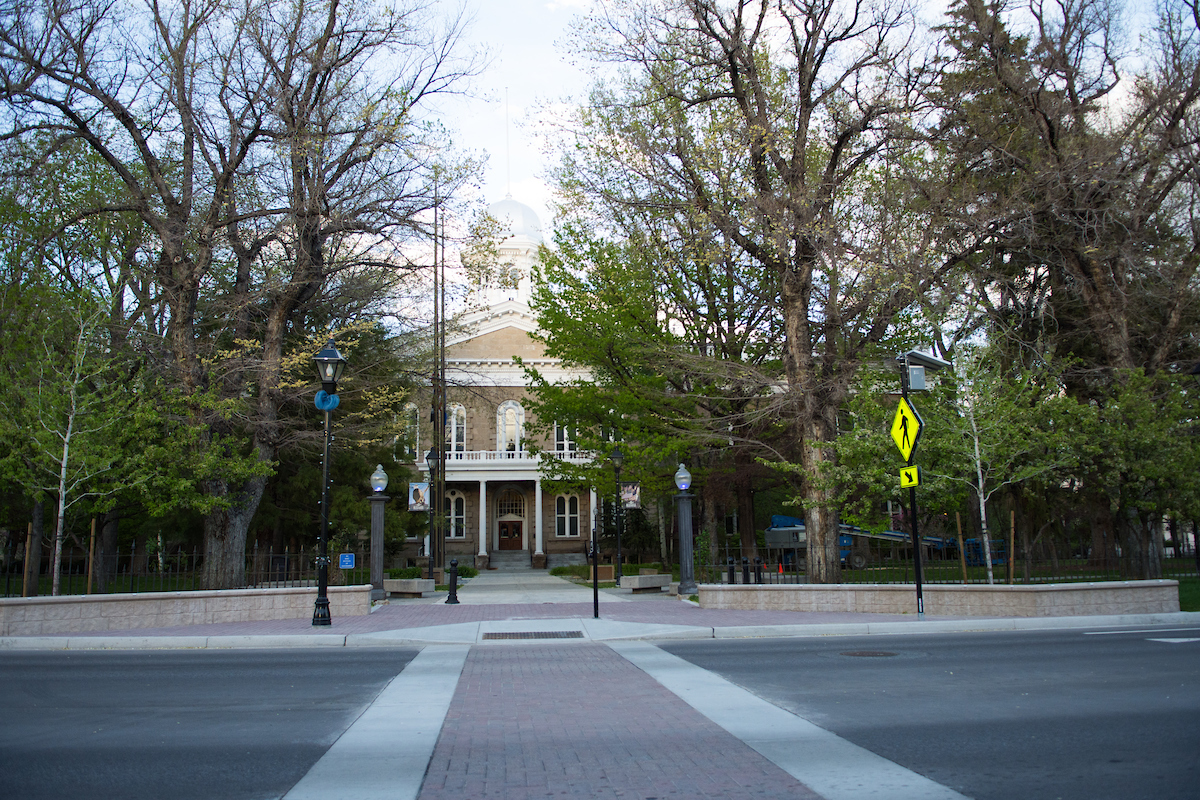Hurdles remain for Census outreach efforts, despite enlarged state marketing and outreach budget

In spite of a substantial bump in state funding, national trends are working against Nevada and could make the decennial population count more difficult than in past years as the state gears up for the 2020 Census.
In a presentation to the state’s Economic Forum on Tuesday, state Demographer Jeff Hardcastle outlined a number of challenges facing the state’s efforts to get an accurate count of its population as required under the decennial Census, a constitutionally mandated population count that determines congressional representation and has an outsized effect on federal funding — roughly $2,086 per person.
Although the state has substantially increased its marketing and outreach budget for the 2020 Census ($5 million, compared to $788,400 in 2000 and $961,000 in 2010), Hardcastle identified several potential trouble spots that could affect Census operations in the state, including lower levels of trust in the government, federal funding issues and general structural problems that make accounting for the estimated 3.09 million Nevadans a difficult proposition.
Hardcastle credited the state for taking a more proactive role in preparing for the Census; in addition to the larger outreach and marketing budget, a state “Complete Count Committee” has started earlier than it did in 2010, with roughly three months to go before Census activities begin in earnest. But he said that the state will still face significant challenges, especially because of a significantly lower number of households who say they’re likely to fill out Census forms on the first go-around.
“So this is the big challenge,” Hardcastle said. “You’re seeing a drop in folks who say they’re likely to respond once they get the invitation...There’s already a built-in 20 percent gap in having to increase that response rate in responsiveness to the Census.”
Although a national Census survey found that people are less likely to respond to the Census in 2020 compared to 2010 (86 percent versus 67 percent), Nevada will have only half the number of local census offices that it did a decade ago. The state will have just two local offices in the Las Vegas area for this census, whereas it had four (three in Las Vegas and one in Reno) for the 2010 cycle.
Additionally, a move toward using the internet to complete Census forms could be frustrated by a relatively large number of Nevada households that reported not having internet access (more than 178,000) and an estimated large percentage of the state’s population (37 to 42 percent, based on educational achievement and age) preferring to fill out Census forms on paper.
Although Nevada’s population is largely urban, the state’s massive land size and spread-out rural communities are likely to be challenging for census organizers. The state has slightly more than 24,000 homes — primarily in rural areas — that are considered to be “Update Leave,” a designation for areas where the majority of housing units do not have mail delivered to their physical location, or the mail delivery information cannot be verified.
Census workers are tasked with updating addresses for all of those homes and leaving a self-response package at each door that allows the households to fill out the Census forms over internet, paper or telephone. Hardcastle said that the equivalent federal funding for those “Update Leave” homes was worth around $92 million per year to the state.
Hardcastle also identified potential difficulties with relatively large numbers of households that aren’t native English speakers — a 2009 to 2013 survey of households in Clark County found a large number of Spanish-speaking households (188,480) that reported speaking English less than “Very Well,” but also significant numbers of households where the dominant language was Tagalog (18,628), Chinese (9,465), Korean (5,850) or Amharic (3,865).
He also said the state and federal governments would need to take proactive measures to combat misinformation and disinformation about the Census process — everything from where college students and ‘snowbirds’ should mark as their residence, to potential lingering effects of the Trump administration’s attempt to add a citizenship question on Census (a move blocked by the U.S. Supreme Court in July).
But Hardcastle also said the state is taking steps in the right direction to prepare for the Census, including the appropriating of $5 million for outreach and marketing efforts as well as the hiring of a Census outreach director — Kerry Durmick — last month.
In addition to the state’s Census outreach committee, separate committees have been formed in populous Washoe and Clark counties, and federal staff are working with county officials in Carson City, Nye, Lyon, Douglas and Pershing counties. A consortium of nonprofit groups to aid with Census outreach efforts — Silver State Voices — has already been formed.
Hardcastle also said that the state’s participation in training for the Local Update of Census Addresses Program in April 2018 and January 2018 had already resulted in updated addresses for approximately 55,000 homes — preliminary clearing a potential hurdle for Census workers.
Separately on Tuesday, the state’s Board of Examiners (composed of Gov. Steve Sisolak, Attorney General Aaron Ford and Secretary of State Barbara Cegavske) approved a $981,000 contract with the Ferraro Group to provide “media and public outreach support services for the 2020 Census.” On Monday, advertising agency VMLY&R announced a national $250 million media buy to promote the 2020 Census.
